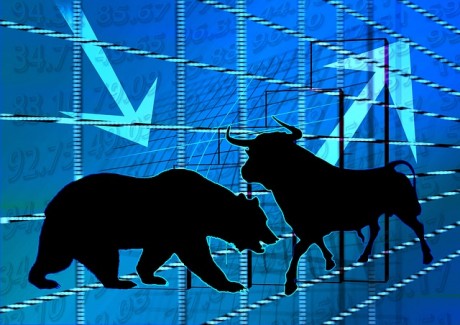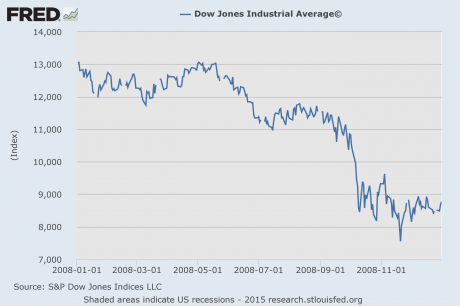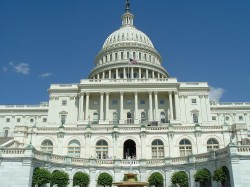 Have you heard of the saying “sell in May and go away”? Traditionally, the period from May through October has been a time of weakness for stocks. In fact, on average stocks hit their lowest point of the year on October 27th. And most people don’t remember this, but the Dow Jones Industrial Average actually began plunging right at this time of the year just prior to the financial crisis of 2008. Most people do remember the huge stock crash that happened in the fall of that year, but the market actually started to slide in May. Throughout the first four and a half months of 2008, stocks moved up and down in a fairly narrow range, and the Dow closed at a short-term peak of 13,028.16 on May 19th. From there it was all downhill for the rest of the year. So will a similar thing happen in 2015 as we approach the next great financial crisis? Since March 20th, the Dow Jones Transportation Average has already fallen by almost 800 points. So will the Dow Jones Industrial Average soon follow? Well, only time will tell, but the Dow was down 190 points on Tuesday. Signs of trouble are popping up all over the place, and the “smart money” is getting out while the getting is good.
Have you heard of the saying “sell in May and go away”? Traditionally, the period from May through October has been a time of weakness for stocks. In fact, on average stocks hit their lowest point of the year on October 27th. And most people don’t remember this, but the Dow Jones Industrial Average actually began plunging right at this time of the year just prior to the financial crisis of 2008. Most people do remember the huge stock crash that happened in the fall of that year, but the market actually started to slide in May. Throughout the first four and a half months of 2008, stocks moved up and down in a fairly narrow range, and the Dow closed at a short-term peak of 13,028.16 on May 19th. From there it was all downhill for the rest of the year. So will a similar thing happen in 2015 as we approach the next great financial crisis? Since March 20th, the Dow Jones Transportation Average has already fallen by almost 800 points. So will the Dow Jones Industrial Average soon follow? Well, only time will tell, but the Dow was down 190 points on Tuesday. Signs of trouble are popping up all over the place, and the “smart money” is getting out while the getting is good.
The chart that I have posted below shows how the Dow Jones Industrial Average performed during 2008. As you can see, stocks began plummeting long before the financial crisis in the fall. From May 19th through early July, the Dow fell by about 2,000 points. Should we expect to see a similar pattern this summer?…
Like I stated earlier in this article, red flags and warning signs are starting to pop up all over the place. The following are just a few of the trouble signs that we have seen this week…
-On Tuesday, the VIX (a closely watched measure of market volatility) jumped by the highest percentage that we have seen so far in 2015. As I have explained so often before, markets tend to go up in calm markets and they tend to go down in volatile markets. So the fact that volatility is on the rise is not a good sign.
-The U.S. dollar index is surging again. In fact, we just witnessed the largest seven day rise in the U.S. dollar index since the collapse of Lehman Brothers. This is another indication that big trouble is ahead. For much more on this, please see my previous article entitled “Guess What Happened The Last Time The U.S. Dollar Skyrocketed In Value Like This?…”
-Thanks to the ongoing Greek crisis, the euro is falling again. It just hit a fresh one-month low, and if I am right it is going to go quite a bit lower as the European financial crisis intensifies.
-In the U.S., orders for durable goods have fallen year over year for four months in a row. When orders for durable goods start going negative for a few months, it is usually a signal that we are entering a recession.
-After rebounding a little bit, the price of crude oil is falling again. It just hit a new one-month low, and the number of oil rigs in operation has declined for 24 weeks in a row. Once again, this is highly reminiscent of what happened back in 2008.
-Unfortunately, it isn’t just oil that is declining. A whole host of other commodity prices are going down right now as well. This happened just prior to the financial crisis of 2008, and it is a sign that we are heading into a deflationary economic slowdown.
The reason why I talk so much about what happened the last time around is that we should be able to learn from it.
Looking back, there were so many warning signs leading up to the financial crisis of 2008 but most people totally missed them. Now, so many of those exact same signs are appearing once again, but they are being ignored.
Only this time the global financial system is in far worse shape than it was back in 2008. Debt levels all over the planet have absolutely exploded over the past seven years, and the debt to GDP ratio for the entire world is now up to a mind blowing 286 percent. In the United States, our national debt has approximately doubled since just prior to the last recession, and at this point it is mathematically impossible to pay it off. We are in the midst of the greatest stock market bubble of all time, the greatest bond bubble of all time (76 trillion dollars) and the greatest derivatives bubble of all time. Anyone that cannot see the trouble that is approaching is willingly blind.
In the western world, we have extremely short attention spans and we suffer deeply from something called “normalcy bias”. The following is how “normalcy bias” is defined by Wikipedia…
The normalcy bias, or normality bias, is a mental state people enter when facing a disaster. It causes people to underestimate both the possibility of a disaster and its possible effects. This may result in situations where people fail to adequately prepare for a disaster, and on a larger scale, the failure of governments to include the populace in its disaster preparations.
The assumption that is made in the case of the normalcy bias is that since a disaster never has occurred then it never will occur. It can result in the inability of people to cope with a disaster once it occurs. People with a normalcy bias have difficulties reacting to something they have not experienced before. People also tend to interpret warnings in the most optimistic way possible, seizing on any ambiguities to infer a less serious situation.
That is such a perfect description of what is happening in the western world today. But just because things have always been a certain way in our past does not mean that they will continue to be that way in the future. A great economic storm is rapidly approaching, and the signs of the times are all around us.
Hopefully more people will start listening to the warnings, because we have almost run out of time to prepare.



